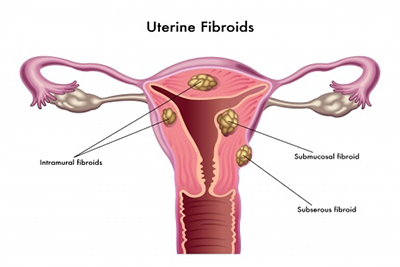Fibroid Diagnosis
Fibroid Diagnosis

Larger fibroids, especially those that protrude on the outside of the uterus may be felt during a routine pelvic exam. However, in an infertility center, most fibroids will be detected by ultrasound. Ultrasound allows the detection of much smaller fibroids than can be appreciated by a pelvic exam.
This is especially true if a woman is overweight. One limitation of ultrasound is the inability in many cases to determine whether there are small fibroids in the uterine cavity or whether fibroids in the muscular wall of the uterus protrude into or distort the uterine cavity.
Other diagnostic methods are:
Hysterosonogram
This is an excellent test for determining the relationship of fibroids to the uterine cavity. First, saline (salt water) is gently instilled into the uterine cavity. This separates the walls of the uterine cavity just enough to allow an ultrasound to detect abnormalities inside the cavity. A fibroid shows as an area where the saline must flow around. Hysterosonogram also allows for the measurement of the distance of a fibroid from the uterine cavity.
Hysterosalpingogram
Similar to a hysterosonogram, the hysterosalpingogram uses clear dye that shows up on x-ray film to separate the walls of the uterine cavity. The hysterosalpingogram has an additional advantage of being able to determine whether the fallopian tubes are blocked.
Hysteroscopy
Insertion of a fiberoptic telescope through the vagina and cervix and into the uterus can detect fibroids that are within the uterine cavity or causing significant distortion of the cavity. Hysteroscopy cannot detect fibroids in the muscular wall of the uterus unless they cause distortion of the cavity. It is also unable to identify even large fibroids that are located outside the wall of the uterus.
MRI
Magnetic resonance imaging uses high powered magnets to determine the difference between different types of tissue. It is very good for determining the difference between fibroid tissue and normal uterine tissue. It is also helpful for distinguishing the difference between fibroids and another less common problem of the uterus known as adenomyosis.
Surgery
Occasionally fibroids are identified during an abdominal surgery such as a laparoscopy . This is useful for fibroids that cause distortion of the outer contour of the uterus or those that are only attached to the uterus by a thin stalk.





